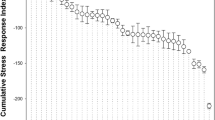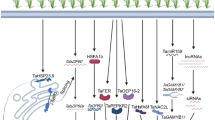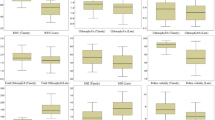Abstract
A 2NvS chromosomal segment carrying bread wheat variety, BARI Gom 33 (‘BG33’), showed tolerance to terminal heat stress and higher yield over a heat-tolerant non-2NvS BARI Gom 26 (‘BG26’) and a heat-susceptible Pavon 76 (‘Pavon’). This study aimed to ascertain the potential of the 2NvS ‘BG33’ in terminal heat-induced oxidative stress tolerance compared to non-2NvS ‘BG26’ and heat-susceptible ‘Pavon’ under two heat regimes at the reproductive stages viz. control (optimum sowing time) and heat stress (late sowing). We found that both ‘BG26’ and ‘BG33’ showed significantly higher tolerance to oxidative stress by limiting the generation of reactive oxygen species (ROS), methylglyoxal under heat stress. During terminal heat stress, both ‘BG33’ and ‘BG26’ exhibited greater cellular homeostasis than heat-susceptible ‘Pavon’, which was maintained by the increased accumulation of osmolytes, nonenzymatic antioxidants, and enzymes associated with ROS scavenging, ascorbate–glutathione cycle, and glyoxalase system. Lesser cellular damage in ‘BG26’ and ‘BG33’ was eventually imitated in a smaller reduction in grain yield (15 and 12%, respectively) than in ‘Pavon’, which had a 33% reduction owing to heat stress. Collectively, our findings revealed that the chromosomal segment 2NvS provides yield advantage to ‘BG33’ under terminal heat stress by lowering oxidative damage. As 2NvS translocation contains multiple nucleotide-binding domain leucine-rich repeat containing, cytochrome P450, and other gene families associated with plant stress tolerance, further studies are warranted to dissect the underlying molecular mechanisms associated with higher heat stress tolerance of 2NvS carrying ‘BG33’.









Similar content being viewed by others
References
Alam MA, Skalicky M, Kabir MR, Hossain MM, Hakim MA, Mandal MS, Islam R, Anwar MB, Hossain A, Hassan F, Mohammadein A (2021) Phenotypic and molecular assessment of wheat genotypes tolerant to leaf blight, rust and blast diseases. Phyton-Int J Exp Bot 90:1301–2132
Alché JD (2019) A concise appraisal of lipid oxidation and lipoxidation in higher plants. Redox Biol 23:101136
Allen GC, Flores-Vergara MA, Krasynanski S, Kumar S, Thompson WF (2006) A modified protocol for rapid DNA isolation from plant tissues using cetyltrimethylammonium bromide. Nat Protoc 1:2320–2325
Almeselmani M, Deshmukh S, Sairam R (2009) High temperature stress tolerance in wheat genotypes: Role of antioxidant defense enzymes. Acta Agron Hung 57:1–14
Asseng S, Foster IAN, Turner NC (2011) The impact of temperature variability on wheat yields. Glob Chang Biol 17:997–1012
Asseng S, Ewert F, Martre P, Rötter RP, Lobell DB, Cammarano D, Zhu Y (2015) Rising temperatures reduce global wheat production. Nat Clim Chang 5:143–147. https://doi.org/10.1038/NCLIMATE2470
Bariana HS, McIntosh RA (1994) Characterisation and origin of rust and powdery mildew resistance genes in VPM1 wheat. Euphytica 76:53–61. https://doi.org/10.1007/BF00024020
Bates LS, Waldren RP, Teari D (1973) Rapid determination of free proline for water stress studies. Plant Soil 39:205–207
Bates D, Mächler M, Bolker B, Walker S (2015) Fitting linear mixed-effects models using lme4. J Stat Softw 67:1–48
BBS (2019) Yearbook of agricultural statistics of Bangladesh, 2019. Bangladesh Bureau of Statistics, Ministry of Planning, Government of the People’s Republic of Bangladesh: Dhaka, Bangladesh, pp. 78–79
Bradford MM (1976) A rapid and susceptible method for the quantitation of microgram quantities of protein utilizing the principle of protein-dye binding. Anal Biochem 72:248–254
Castillo FI, Penel I, Greppin H (1984) Peroxidase release induced by ozone in Sedum album leaves. Plant Physiol 74:846–851
Coffel ED, Horton RM, Sherbinin A (2018) Temperature and humidity-based projections of a rapid rise in global heat stress exposure during the 21st century. Environ Res Lett 13:014001
Cruz CD, Peterson GL, Bockus WW (2016) The 2NS translocation from Aegilops ventricosa confers resistance to the Triticum pathotype of Magnaporthe oryzae. Crop Sci 56:990–1000. https://doi.org/10.2135/cropsci2015.07.0410
Cruz CD, Valent B (2017) Wheat blast disease: danger on the move. Trop Plant Pathol 42:210–222. https://doi.org/10.1007/s40858-017-0159-z
Demelash T, Amou M, Gyilbag A, Tesfay G, Xu Y (2022) Adaptation potential of current wheat cultivars and planting dates under the changing climate in Ethiopia. Agronomy 12:37. https://doi.org/10.3390/agronomy12010037
de Mendiburu F, Yaseen M (2020) Agricolae: Statistical procedures for agricultural research. R package version 1.4.0. https://myaseen208.github.io/agricolae/https://cran.r-project.org/package=agricolae. Accessed on 15 September 2021
Dixon DP, Skipsey M, Edwards R (2010) Roles for glutathione transferases in plant secondary metabolism. Phytochemistry 71:338–350
Djanaguiraman M, Boyle DL, Welti R, Jagadish SVK, Prasad PVV (2018) Decreased photosynthetic rate under high temperature in wheat is due to lipid desaturation, oxidation, acylation, and damage of organelles. BMC Plant Biol 18:55
Doderer A, Kokkelink I, Van der Veen S, Valk B, Schram A, Douma A (1992) Purification and characterization of two lipoxygenase isoenzymes from germinating barley. Biochim Biophys Acta 112:97–104
Dubey R, Pathak H, Chakrabarti B, Singh S, Gupta DK, Harit RC (2020) Impact of terminal heat stress on wheat yield in India and options for adaptation. Agric Syst 181:102826
ElBasyoni I, Saadalla M, Baenziger S, Bockelman H, Morsy S (2017) Cell membrane stability and association mapping for drought and heat tolerance in a worldwide wheat collection. Sustainability 9:1606
Elia AC, Galarini R, Taticchi MI, Dörr AJ, Mantilacci L (2003) Antioxidant responses and bioaccumulation in Ictalurus melas under mercury exposure. Ecotoxicol Environ Saf 55:162–167
Elstner EF, Heupel A (1976) Inhibition of nitrite formation from hydroxylammoniumchloride: a simple assay for superoxide dismutase. Anal Biochem 70:616–620
FAO (2021) FAOSTAT, Food and Agriculture Organization, Rome. 2021. Available online: http://www.fao.org/faostat/en/#home. Accessed on 15 September 2021
Farooq M, Bramley H, Palta JA, Siddique KHM (2011) Heat stress in wheat during reproductive and grain-filling phases. Crit Rev Plant Sci 30:491–507
Gao L, Koo DH, Juliana P (2021) The Aegilops ventricosa 2NvS segment in bread wheat: cytology, genomics and breeding. Theor Appl Genet 134:529–542. https://doi.org/10.1007/s00122-020-03712-y
Gautam A, Sai Prasad SV, Jajoo A (2015) Canopy temperature as a selection parameter for grain yield and its components in durum wheat under terminal heat stress in late sown conditions. Agric Res 4:238–244. https://doi.org/10.1007/s40003-015-0174-6
Gibson LR, Paulsen GM (1999) Yield components of wheat grown under high temperature stress during reproductive growth. Crop Sci 39:1841–1846
Gill SS, Tuteja N (2010) Reactive oxygen species and antioxidant machinery in abiotic stress tolerance in crop plants. Plant Physiol Biochem 48:909–930
Hasanuzzaman M, Alam MM, Rahman A, Hasanuzzaman M, Nahar K, Fujita M (2014) Exogenous proline and glycine betaine mediated upregulation of antioxidant defense and glyoxalase systems provides better protection against salt-induced oxidative stress in two rice (Oryza sativa L.) varieties. Biomed Res Int 2014:757219. https://doi.org/10.1155/2014/757219
Hasanuzzaman M, Nahar K, Hossain MS, Mahmud JA, Rahman A, Inafuku M, Oku H, Fujita M (2017) Coordinated actions of glyoxalase and antioxidant defense systems in conferring abiotic stress tolerance in plants. Int J Mol Sci 18:200. https://doi.org/10.3390/ijms18010200
Hasanuzzaman M, Bhuyan MHMB, Anee TI, Parvin K, Nahar K, Al Mahmud J, Fujita M (2019) Regulation of ascorbate-glutathione pathway in mitigating oxidative damage in plants under abiotic stress. Antioxidants 8:384
Hasanuzzaman M, Bhuyan MHMB, Zulfiqar F, Raza A, Mohsin SM, Mahmud JA, Fujita M, Fotopoulos V (2020) Reactive oxygen species and antioxidant defense in plants under abiotic stress: revisiting the crucial role of a universal defense regulator. Antioxidants 9:681. https://doi.org/10.3390/antiox9080681
Heath RL, Packer L (1968) Photoperoxidation in isolated chloroplast: I. Kinetics and stoichiometry of fatty acid peroxidation. Arch Biochem Biophys 125:189–198
Helguera M, Khan IA, Kolmer J, Lijavetzky D, Zhong-qi L, Dubcovsky J (2003) PCR assays for the Lr37-Yr17-Sr38 cluster of rust resistance genes and their use to develop isogenic hard red spring wheat lines. Crop Sci 43:1839–1847
Hemantaranjan A (2014) Heat stress responses and thermotolerance. Adv Plants Agric Res 1:1–10
Hossain MA, Fujita M (2009) Purification of glyoxalase-I from onion bulbs and molecular cloning of its cDNA. Biosci Biotechnol Biochem 73:2007–2013
Hossain MZ, Hossain MD, Fujita M (2006) Induction of pumpkin glutathione S-transferase by different stresses and its possible mechanisms. Biol Plant 50:210–218
Hossain A, Teixeira da Silva JA (2013) Wheat production in Bangladesh: its future in the light of global warming. AoB Plants 5:pls042
Iqbal N, Umar S, Khan NA, Corpas FJ (2021) Nitric oxide and hydrogen sulfide coordinately reduce glucose sensitivity and decrease oxidative stress via ascorbate-glutathione cycle in heat-stressed wheat (Triticum aestivum L.) Plants. Antioxidants 10:108
Islam MT, Croll D, Gladieux P, Soanes DM, Persoons A, Bhattacharjee P, Hossain MS, Gupta DR, Rahman MM, Mahboob MG, Cook N, Salam MU, Surovy MZ, Sancho VB, Maciel JLN, NhaniJúnior A, Castroagudín VL, de Assis Reges JT, Ceresini PC, Ravel S, Kellner R, Fournier E, Tharreau D, Lebrun M-H, McDonald BA, Stitt T, Swan D, Talbot NJ, Saunders DGO, Win J, Kamoun S (2016) Emergence of wheat blast in Bangladesh was caused by a South American lineage of Magnaporthe oryzae. BMC Biol 14:84. https://doi.org/10.1186/s12915-016-0309-7
Islam MT, Gupta DR, Hossain A, Roy KK, He X, Kabir MR, Singh PK, Khan MAR, Rahman M, Wang GL (2020) Wheat blast: a new threat to food security. Phytopathol Res 2:28. https://doi.org/10.1186/s42483-020-00067-6
Jagadish SVK (2020) Heat stress during flowering in cereals-Effects and adaptation strategies. New Phytol 226:1567–1572
Khatun S, Ahmed JU, Mohi-Ud-Din M (2015) Variation of wheat cultivars in their relationship between seed reserve utilization and leaf temperature under elevated temperature. J Crop Sci Biotechnol 18:97–101
Li Q, Wang W, Wang W, Zhang G, Liu Y, Wang Y, Wang W (2018) Wheat F-box protein gene TaFBA1 is involved in plant tolerance to heat stress. Front Plant Sci 9:521
Lobell DB, Sibley A, Ortiz-Monasterio JI (2012) Extreme heat effects on wheat senescence in India. Nat Clim Chang 2:186–189
Majláth I, Szalai G, Soós V, Sebestyén E, Balázs E, Vanková R, Dobrev PI, Tari I, Tandori J, Janda T (2012) Effect of light on the gene expression and hormonal status of winter and spring wheat plants during cold hardening. Physiol Plant 145:296–314
Mishra A, Jha B, Dubey RS (2011) Arsenite treatment induces oxidative stress, upregulates antioxidant system, and causes phytochelatin synthesis in rice seedlings. Protoplasma 248:565–577
Mohi-Ud-Din M, Siddiqui N, Rohman M, Jagadish SVK, Ahmed JU, Hassan MM, Hossain A, Islam T (2021b) Physiological and biochemical dissection reveals a trade-off between antioxidant capacity and heat tolerance in bread wheat (Triticum aestivum L.). Antioxidants 10:351
Mohi-Ud-Din M, Talukder D, Rohman M, Ahmed JU, Jagadish SVK, Islam T, Hasanuzzaman M (2021a) Exogenous application of methyl-jasmonate and salicylic acid mitigates drought-induced oxidative damages in french bean (Phaseolus vulgaris L.). Plants 10:2066. https://doi.org/10.3390/plants10102066
Mottaleb KA, Govindan V, Singh PK, Sonder K, He X, Singh RP, Joshi AK, Barma NCD, Kruseman G, Erenstein O (2019) Economic benefits of blast-resistant biofortified wheat in Bangladesh: the case of BARI Gom 33. Crop Prot 123:45–58
Narayanan S, Tamura PJ, Roth MR, Prasad PVV, Welti R (2016) Wheat leaf lipids during heat stress: I. high day and night temperatures result in major lipid alterations. Plant Cell Environ 39:787–803
Narendra MC, Roy C, Kumar S, Virk P, De N (2021) Effect of terminal heat stress on physiological traits, grain zinc and iron content in wheat (Triticum aestivum L.). Czech J Genet Plant Breed 57:43–50
Noctor G, Gomez L, Vanacker H, Foyer CH (2002) Interactions between biosynthesis, compartmentation and transport in the control of glutathione homeostasis and signaling. J Exp Bot 53:1283–1304
Noctor G, Mhamdi A, Foyer CH (2014) The roles of reactive oxygen metabolism in drought: not so cut and dried. Plant Physiol 164:1636–1648
Noctor G, Mhamdi A, Foyer CH (2016) Oxidative stress and antioxidative systems: Recipes for successful data collection and interpretation. Plant Cell Environ 39:1140–1160
Pandey S, Fartyal D, Agarwal A, Shukla T, James D, Kaul T, Negi YK, Arora S, Reddy MK (2017) Abiotic stress tolerance in plants: myriad roles of ascorbate peroxidase. Front Plant Sci 8:581
Pastenes C, Horton P (1999) Resistance of photosynthesis to high temperature in two bean varieties (Phaseolus vulgaris L.). Photosynth Res 62:97–203
Prasad PVV, Djanaguiraman M (2014) Response of floret fertility and individual grain weight of wheat to high temperature stress: sensitive stages and thresholds for temperature and duration. Funct Plant Biol 41:1261–1269
Principato GB, Rosi G, Talesa V, Govannini E, Uolila L (1987) Purification and characterization of two forms of glyoxalase II from rat liver and brain of Wistar rats. Biochem Biophys Acta 911:349–355
Sairam RK, Deshmukh PS, Shukla DS (1997) Tolerance of drought and temperature stress in relation to increased antioxidant enzyme activity in wheat. J Agron Crop Sci 178:171–178
Singh D, Wang X, Kumar U, Gao L, Noor M, Imtiaz M, Singh RP, Poland J (2019) High-throughput phenotyping enabled genetic dissection of crop lodging in wheat (Triticum aestivum). Front Plant Sci 10:394. https://doi.org/10.3389/fpls.2019.00394
Spitz DR, Oberley LW (1989) An assay for superoxide dismutase activity in mammalian tissue homogenates. Anal Biochem 179:8–18
Suzuki N, Koussevitzky S, Mittler R, Miller G (2012) ROS and redox signalling in the response of plants to abiotic stress. Plant Cell Environ 35:259–270
Tao X, Wang M-X, Dai Y, Wang Y, Fan Y-F, Mao P, Ma X-R (2017) Identification and expression profile of CYPome in perennial ryegrass and tall fescue in response to temperature stress. Front Plant Sci 8:1519
Tiwari YK, Yadav SK (2019) Effect of high-temperature stress on ascorbate–glutathione cycle in maize. Agric Res 9:179–187
Valadez-Bustos MG, Aguado-Santacruz GA, Tiessen-Favier A, Robledo-Paz A, Munoz-Orozco A, Rascon-Cruz Q, Santacruz-Varela A (2016) A reliable method for spectrophotometric determination of glycine betaine in cell suspension and other systems. Anal Biochem 498:47–52
Wahid A, Gelani S, Ashraf M, Foolad MR (2007) Heat tolerance in plants: an overview. Environ Exp Bot 61:199–223
Wang GP, Zhang XY, Li F, Luo Y, Wang W (2010) Overaccumulation of glycine betaine enhances tolerance to drought and heat stress in wheat leaves in the protection of photosynthesis. Photosynthetica 48:117–126
Wild R, Ooi L, Srikanth V, Munch G (2012) A quick convenient and economical method for the reliable determination of methylglyoxal in millimolar concentrations: The N-acetyl-L-cysteine assay. Anal Bioanal Chem 403:2577–2581
Williamson VM, Thomas V, Ferris H, Dubcovsky J (2013) An Aegilops ventricosa translocation confers resistance against root-knot nematodes to common wheat. Crop Sci 53:1412–1418
Yang S-H, Wang L-J, Li S-H (2007) Ultraviolet-B irradiation-induced freezing tolerance in relation to antioxidant system in winter wheat (Triticum aestivum L.) leaves. Environ Exp Bot 60:300–307
Zhao C, Liu B, Piao S, Wang X, Lobell DB, Huang Y, Huang M (2017) Temperature increase reduces global yields of major crops in four independent estimates. Proc Nat Acad Sci U S A 114:9326–9331
Acknowledgements
We gratefully acknowledge the financial support of the Research Management Wing (RMW), Bangabandhu Sheikh Mujibur Rahman Agricultural University, Gazipur, Bangladesh. We also extend our thanks to Molecular Breeding Laboratory, Bangladesh Agricultural Research Institute, Gazipur, Bangladesh for providing laboratory facilities during the research work.
Author information
Authors and Affiliations
Contributions
Mohammed Mohi-Ud-Din: investigation, visualization, software, writing — original draft preparation. Md. Motiar Rohman: data curation, methodology, investigation. Md. Ashraful Alam: investigation. Mirza Hasanuzzaman: methodology, writing — original draft preparation, writing — reviewing and editing. Tofazzal Islam: conceptualization, supervision, writing — reviewing and editing.
Corresponding authors
Ethics declarations
Conflict of interest
The authors declare no competing interests.
Additional information
Handling Editor: Bhumi Nath Tripathi
Publisher's note
Springer Nature remains neutral with regard to jurisdictional claims in published maps and institutional affiliations.
Supplementary Information
Below is the link to the electronic supplementary material.
Rights and permissions
About this article
Cite this article
Mohi-Ud-Din, M., Rohman, M.M., Alam, M.A. et al. Wheat variety carrying 2NvS chromosomal segment provides yield advantage through lowering terminal heat–induced oxidative stress. Protoplasma 260, 63–76 (2023). https://doi.org/10.1007/s00709-022-01759-w
Received:
Accepted:
Published:
Issue Date:
DOI: https://doi.org/10.1007/s00709-022-01759-w




